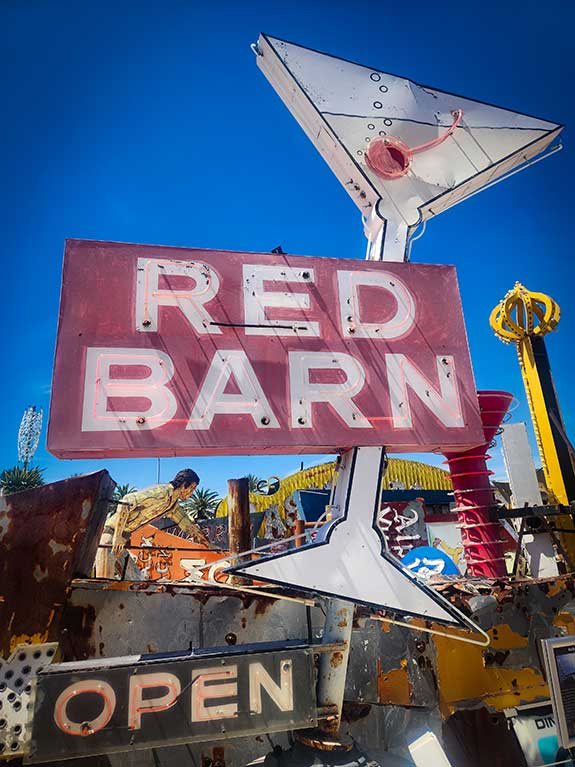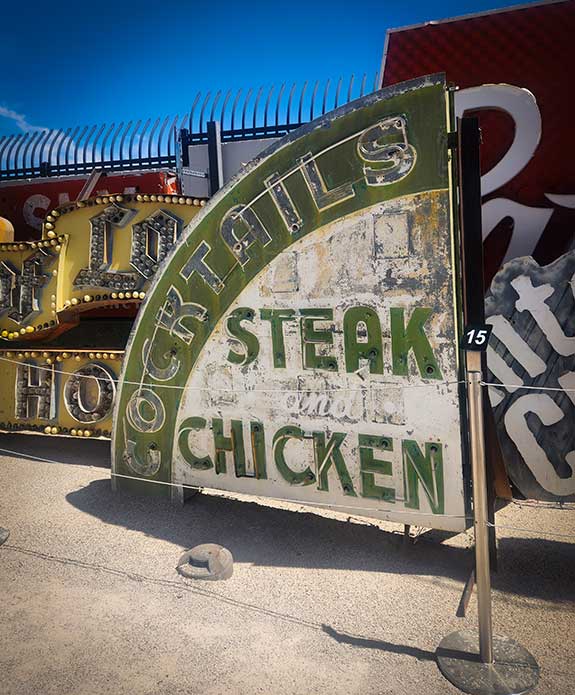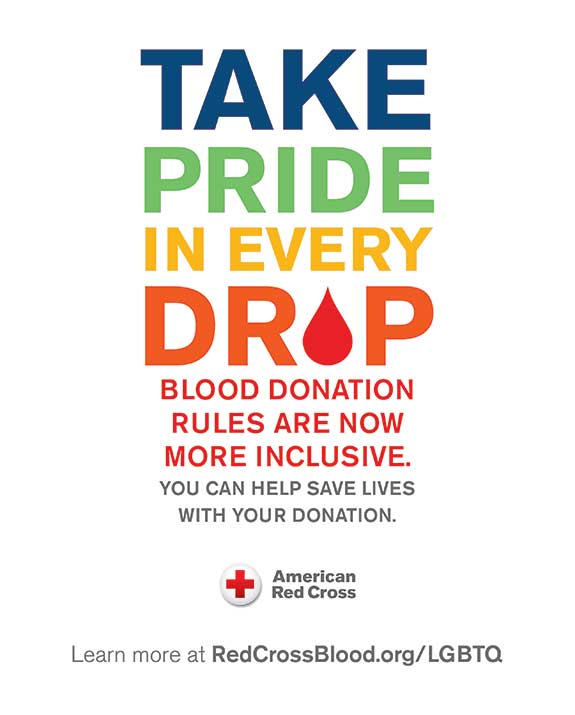The Neon Museum: Shining Through Time
The Enduring Legacy of LGBTQ+ Establishments in Las Vegas
Article and Photography by Jennifer Howe (they/them)
In the vibrant tapestry of Las Vegas, where every glimmering light tells a story, a narrative of resilience and community is woven within the walls of LGBTQ+ establishments like Le Café and the Red Barn. These sanctuaries of acceptance, though often overlooked, stand as monuments to the courage and defiance of those who dared to challenge societal norms. Their stories, now preserved within the Neon Boneyard of the Neon Museum, serve as a testament to the enduring spirit of LGBTQ+ history in the Silver State.
In the shadows of the bustling Strip, the LGBTQ+ community in Southern Nevada sought solace in the embrace of spaces like Le Café and the Red Barn. Amidst a backdrop of fear and oppression, where police entrapment and legislative persecution loomed large, these establishments provided a refuge—a place where individuals could authentically express themselves without fear of judgment or reprisal. Yet, their significance extends beyond mere venues for revelry; they were crucibles for activism and education, catalyzing a newfound sense of political consciousness within the community.

The Red Barn opened as an antique store in 1958 but went through some changes in the 1960s, becoming a bar. During the day, it catered primarily to a working-class clientele, but in the evening, it catered to Las Vegas’ LGBTQ+ community.
Trailblazers like Marge Jacques and Albert “Bert” Hood are at the heart of this narrative, whose courage and resilience paved the way for LGBTQ+ visibility in Las Vegas. With Le Café as her pulpit, Marge Jacques used her platform to amplify the voices of the marginalized, publishing “Gay Notes from Le Café” and advocating for LGBTQ+ rights in the face of adversity. Similarly, Albert Hood’s Red Barn emerged as a beacon of defiance, challenging societal norms with its unapologetic celebration of LGBTQ+ culture.
Despite facing acts of violence and intimidation, including the tragic torching of Le Café and physical assault on Bert, Jacques and Hood persevered, their legacies immortalized within the walls of the Neon Museum. The neon signs of Le Café and the Red Barn, now part of the museum’s collection, serve as poignant reminders of the resilience and defiance of those who dared to challenge the status quo. They stand as symbols of hope and inspiration, ensuring that the stories of LGBTQ+ pioneers are not lost to history but celebrated for generations to come.
As visitors stroll through the Neon Museum, tracing the luminous pathways of Las Vegas’ past, let them pause to reflect on the significance of these vintage signs. They are not merely relics of a bygone era but artifacts of courage and defiance, testaments to the enduring legacy of LGBTQ+ history in Las Vegas. And as these signs continue to shine brightly within the museum’s outdoor gallery, they serve as beacons of hope, illuminating the path towards a more inclusive and equitable future for all.

Marge Jacques, an out lesbian woman, opened Le Café in 1970 as the first openly gay bar in Las Vegas. This differed from other properties, at the time like the Red Barn and Maxine’s that were closeted, only catering to the LGBTQ+ community after dark, during “pink hours.”
This article was originally published in the 2024 PRIDE Month Issue of Las Vegas PRIDE Magazine, and can be read in its original format here.


